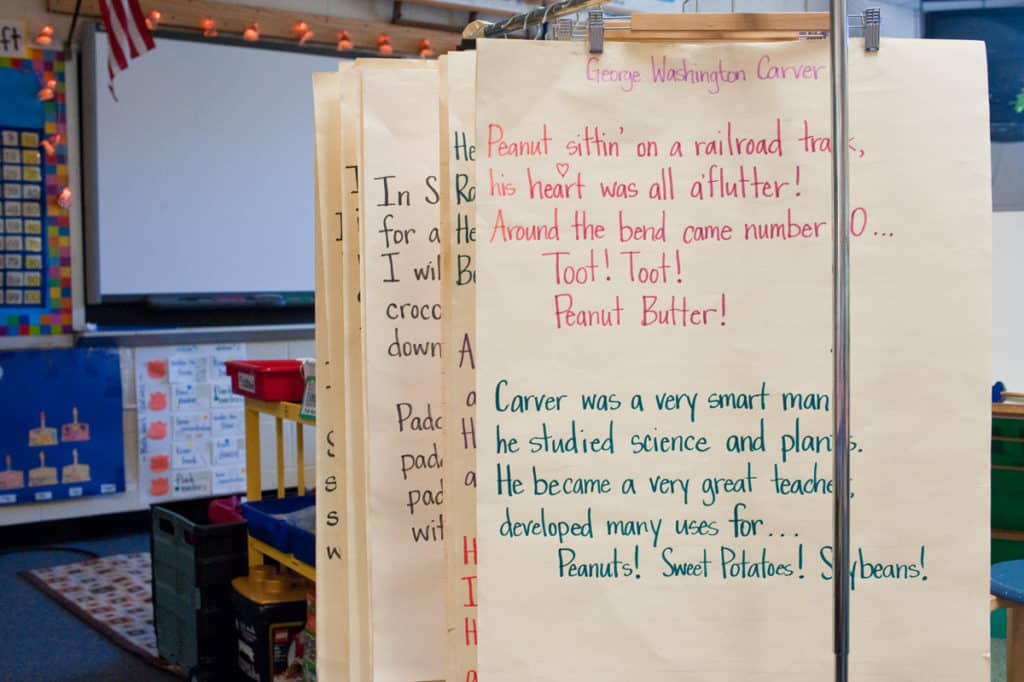
Children need a classroom environment they can understand and trust. They need to understand the routines and to know where to find things, they need uncluttered spaces to do their work, and they need clear, safe pathways for moving about. It’s essential that classrooms be well organized, predictable, and orderly, with a place for everything and everything in its place. Not only does this make the classroom pleasant for both children and adults to be in, but it nurtures children’s initiative and creativity, enables them to use and care for the space independently, and clearly communicates the message that this is a space worth caring about.
There’s no one right way to create an orderly and predictable classroom. What’s most important is that you create systems of organization that make sense to you and to the children, that you teach the systems well, and that you are vigilant about keeping the room and the materials organized and in good working order.
When trying to organize an entire classroom space, it can be difficult knowing where to begin. The first step is to release yourself from feeling that you need to accomplish everything on your first try. Instead, choose one or two areas to focus on. Once you see the benefits of your efforts in these areas, it’s likely that you’ll be eager to do more.
Below are some tips and tricks from Responsive Classroom Educational Consultants Michelle Gill, Nicole Doner, Ramona McCullough, Ellie Cornecelli, and Lindsey Lynch, who have taught and observed in classrooms all over the world.
Michelle Gill: Work with students to design how the class will be organized! This means setting yourself up to start the year, but not filling the space with teacher stuff before the kids even get there. At the beginning of the school year, talk with students about their work preferences (places to be alone, displays, places to work together, etc.) and use their responses to inform a collaborative classroom organization. Having students contribute to the organization of the space and materials in some way provides a sense of shared ownership and autonomy.
Ellie Cornecelli: Specialists typically have the same students year after year, so it works to have students contribute to getting the room ready for the next fall. At the end of the year, I would have a few interested students create new labels for organization bins of supplies for the next year. It was a nice way to include students in the space in a really simple way.
Lindsey Lynch: With my first graders I hung learning artifacts—like anchor charts our class created, the previous week’s morning messages, and current song/poem charts—on a kid-sized garment rack in the back of our room. This made the charts accessible while keeping them out of the way. The kids loved the clothespins and the novelty, and I loved the effective management of lots of extra-large pieces of paper!
Ramona McCullough: After I taught the students how to use classroom materials, we stored them on shelves in stackable, open-top bins. Since they were easy for students to access, I never had to stop instruction to get supplies!
Ellie Cornecelli: My classroom had an old magnetic chalkboard and I had no room for supplies. I got about 20 recycled cans, hot-glued strong magnets to them, and organized them with colored pencils, markers, and other specialty drawing tools. I also covered the chalkboard with paper that had an outline for where each of these cans “lived” so nothing was missing at the end of the period.
Nicole Doner: I had a classroom with a mix of tables and desks. During the first week of school, there were no assigned seats and every student tried out both types of seating to figure out what worked for them before they chose their seats for the first few months of school.
Ellie Cornecelli: When I had an extremely small classroom, I got rid of my teacher desk and never looked back. I had organizational furniture for my files and resources in “my” area of the room—I never missed having a desk and it freed up so much space.
Ellie Cornecelli: Early in my career, I used a rainbow color coding system to organize grade level bins, and decorated with matching curtains and displays—I even added zebra print at one point. One day I looked up and realized it looked like an overwhelming circus! I switched to varying shades of blue and green, which felt more soothing to everyone.
Michelle Gill: If you can bring in color with lamps, or window coverings, or signs, or containers—do it! But do it with two or three accents that you use throughout, avoiding a color bonanza everywhere. That can be really overstimulating!
For more on this, check out our Classroom Organization Quick Coaching Guide (for K-8):